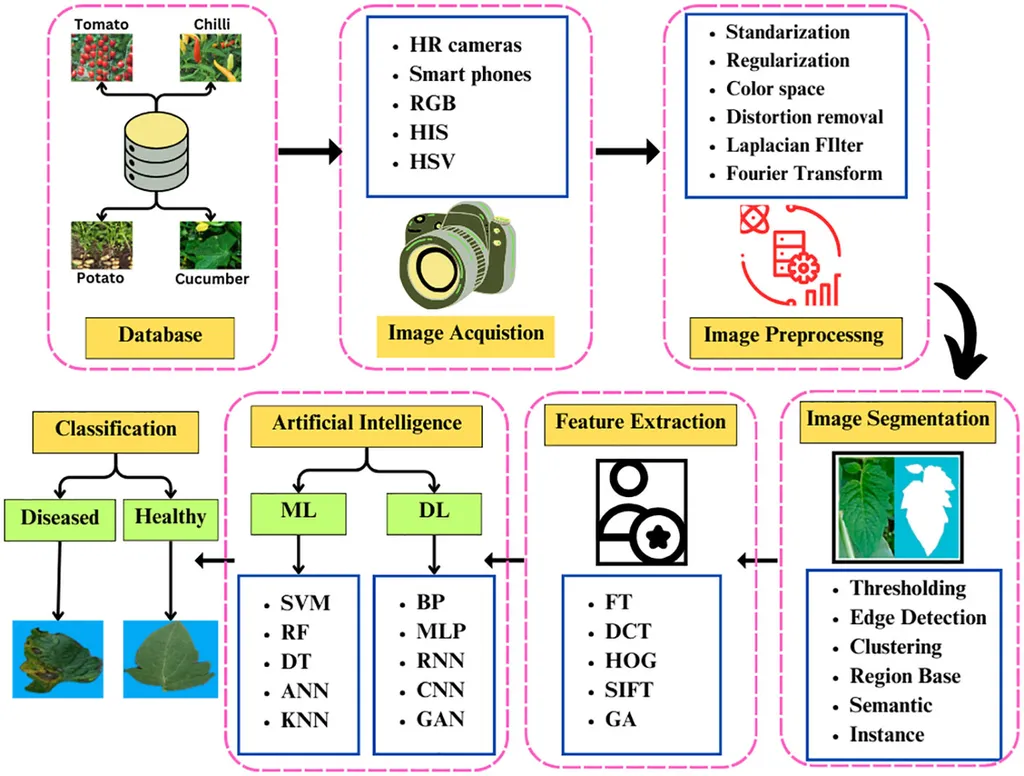In the heart of Pakistan’s agricultural landscape, a groundbreaking dataset is set to revolutionize how farmers combat plant diseases. The PlantCity dataset, recently published in *Data in Brief* (which translates to “Data in Brief” in English), offers a comprehensive collection of high-resolution images of leaves from 12 key crops, addressing significant yield losses due to plant diseases. This initiative, led by Muhammad Sheraz Khan from the Department of Computer Science at Islamia College University Peshawar, aims to harness the power of deep learning and computer vision to foster precision agriculture.
The dataset comprises 10,667 images, augmented to a total of 52,273, covering 52 classes of diseases and healthy leaves. “This dataset is a game-changer for Pakistani agriculture,” says Khan. “By capturing images in real-field conditions, we can train models to identify diseases early, even under challenging environmental factors like high temperatures.”
The data was meticulously collected in Charsadda and Chitral, regions known for their diverse climatic conditions. From April to July 2023–2024, researchers documented the impact of temperatures ranging from 25°C to 44°C on disease symptoms. This variability ensures that the models developed from this dataset can perform accurately across different environmental conditions.
The implications for the agricultural sector are profound. Early disease identification through smartphone-based computer vision can significantly reduce yield losses, enhance crop quality, and promote sustainable farming practices. “Precision agriculture is the future,” Khan emphasizes. “With tools like PlantCity, farmers can make data-driven decisions, optimize resource use, and ultimately increase productivity.”
The PlantCity dataset not only supports the development of robust deep learning models but also paves the way for innovative applications in agricultural technology. As the world grapples with climate change and food security challenges, such advancements are crucial. This research could shape future developments in automated disease classification, remote sensing, and integrated pest management systems.
For the energy sector, the ripple effects are equally significant. Enhanced agricultural productivity can lead to more efficient use of resources, including water and energy. As farmers adopt precision agriculture techniques, the demand for energy-efficient solutions is likely to rise, creating new opportunities for innovation and investment.
In conclusion, the PlantCity dataset represents a pivotal step forward in the intersection of technology and agriculture. By providing a rich, diverse collection of images, it empowers researchers and farmers to tackle plant diseases with unprecedented accuracy and efficiency. As Khan and his team continue to refine their models, the potential for transforming Pakistan’s agricultural landscape—and beyond—is immense. This research not only highlights the importance of data-driven approaches but also underscores the critical role of technology in shaping a sustainable future.

